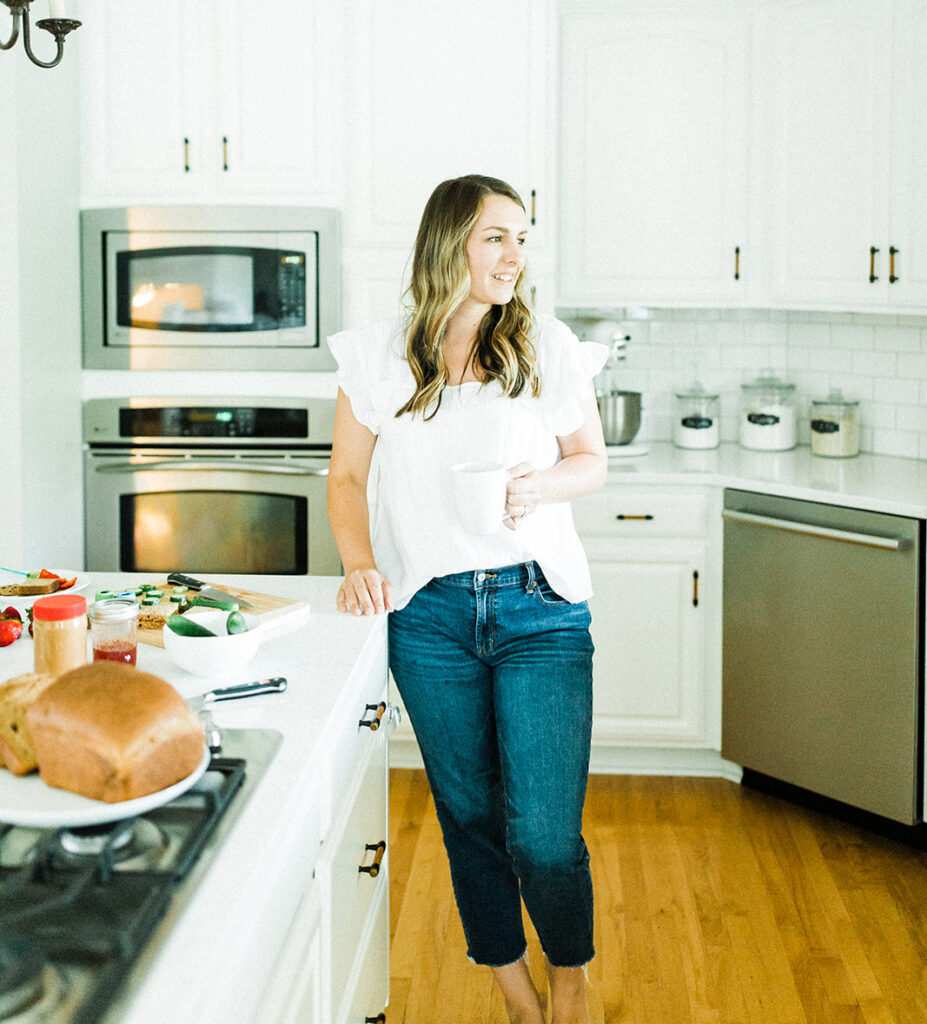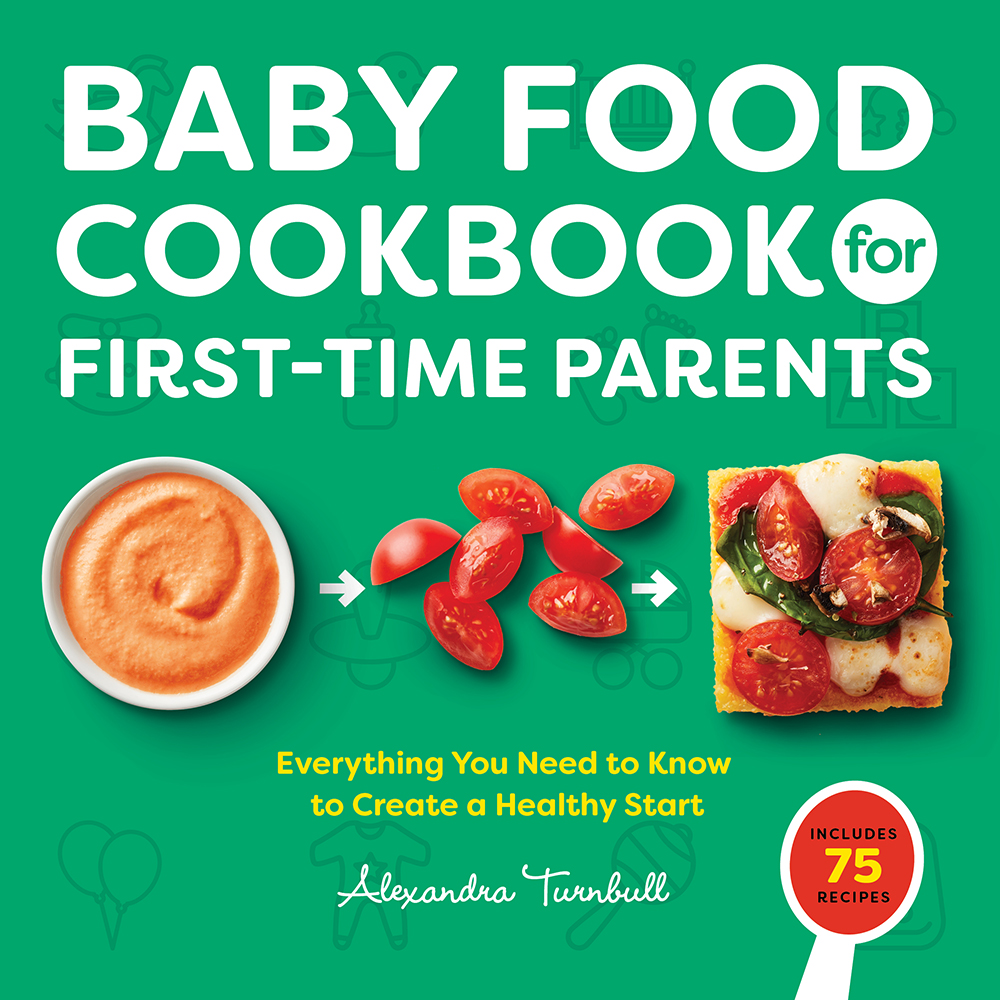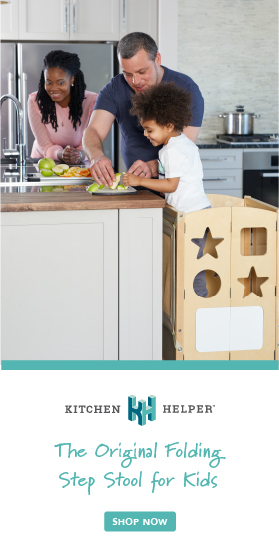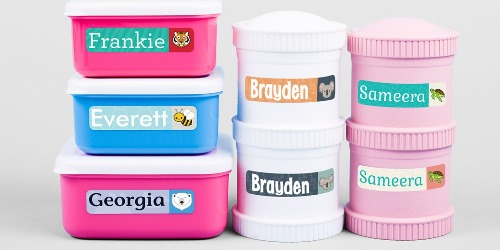It’s one thing when your toddler downright refuses the meal you cooked for them, but when they blatantly throw it all over the floor – that’ll make a parent lose their mind.
Toddlers throwing food is one of the biggest mealtime frustrations for parents. Not only does it leave a huge mess, but it’s also wasted food and effort.
If you struggle with this mealtime challenge, you’re not alone and are in the right place.
While there’s no guarantee that your child will never throw food again, a few things can help.
This post will provide you with what to say, do and avoid when it comes to your baby or toddler throwing food.
Table of Contents
Set realistic expectations
Have you set realistic expectations for what your child can or cannot do at mealtimes? Do you expect them to sit quietly for thirty minutes, enjoy everything on their plate, and clean it too?
If so, you probably need to take a look at lowering the bar.
Many times, we as parents are the ones setting mealtimes up for failure, not our children. We expect far too much from them.
Your toddler or baby throwing food on the floor is developmentally normal. They’re exploring textures, pushing boundaries, and apparently studying physics too.
Below are six simple strategies you can implement to help your baby or toddler stop throwing food, or at least less food.
1. Don’t react
If you react to your toddler throwing food, you’ve reinforced the behavior. No matter if you’ve positively or negatively reacted, you’ve still reinforced the behavior. When we make a big deal over them throwing food, sometimes it can make them want to keep doing it.
Instead, try and keep your cool (easier said than done). This doesn’t mean you completely ignore them and let them throw their entire meal all over the kitchen.
Try this: “I see that you’re throwing your food. Food stays on the plate or goes in your mouth.”
2. Tell them what to do
If you tell a toddler: “Don’t push the red button,” do you think they’ll push the red button? It’s likely they only heard “Push the red button,” so they push the red button even though you told them not to.
Cue the cycle of toddlers throwing food because they always do the opposite of what you tell them to do. Again a reaction, good or bad, reinforces the behavior.
Instead, tell them WHAT to do instead of what NOT to do.
Try this: “Food stays on the plate or goes in your mouth.”
3. Give them a target
This tip might just be all that you need to help stop or minimize toddlers throwing food. If they continue to throw food, at least give them a target to minimize the mess.
Again, sometimes we expect too much of our children and assume they know food shouldn’t be thrown or that it should stay on their plates. We need to help teach them this.
Your baby or toddler could be throwing food for a variety of reasons; maybe they don’t like it, they’re full, or they think it’s fun. Giving them a target that’s not the floor can be helpful.
‘No thank you bowl’
This is a bowl, cup, or even a plate that you provide for your child to put unwanted items in. If you find that they’re just putting everything in the bowl, it’s likely they aren’t hungry or you need to start with smaller portions.
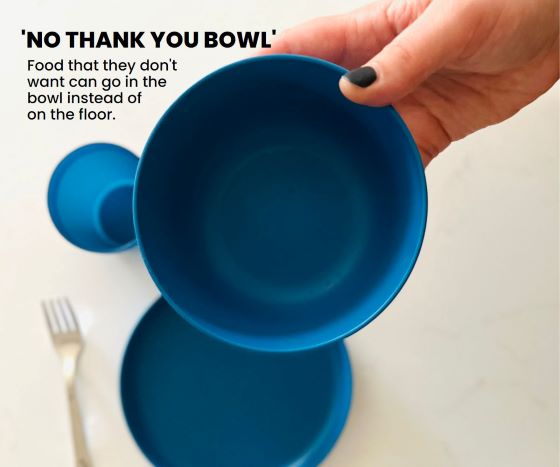
Placemat
A placemat can be helpful when your baby or toddler is throwing or even dropping utensils, cups, or plates.
Take a piece of paper and trace a cup, plate, and utensils – it doesn’t have to be pretty. When mealtime comes around, show your baby the placemat and where their cup, plate, and utensils go.
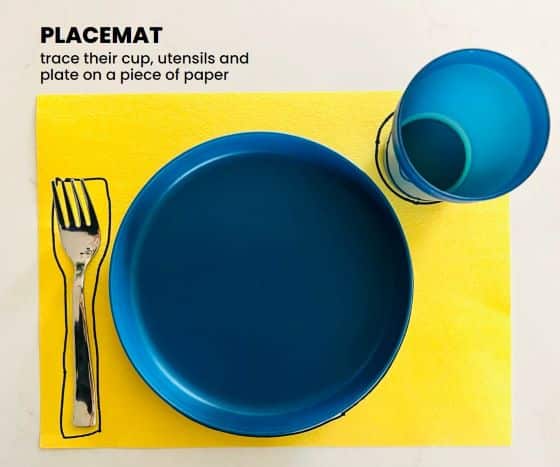
Try this: “That’s okay, you don’t have to eat it yet. You can put it in the ‘no thank you’ bowl if you’d like.”
4. Have them help clean up
Maybe you laughed at this suggestion: “yeah right! my baby or toddler help clean up. You’re nuts!”
Depending on how old they are, you can and should have them help with the cleanup process of mealtimes, regardless if they threw food, or a fork.
Will they clean up everything to your standards? Definitely not. Remember, lower your expectations and focus on the skills you’re helping your child learn.
Infants: give them a wet rag to play with and attempt to wash their high chair tray. I love using swedish dishcloths because they’re reusable and are gentle on your baby’s skin.
Toddlers: give them a bowl or dish and have them help pick up food off the floor. They may eat a few pieces here and there, which isn’t the end of the world. Maybe they’ll actually try something new!
You can also give your toddler a squirt bottle and rag to help clean the counters or the floors. Again, it won’t be perfect, but they will start to learn the consequences of throwing food.
Try this: “Dinner is all done. Time to clean up. Would you like to wash the counter or the floor?”
5. Remove or minimize distractions
Another reason why it’s common to witness toddlers throwing food or utensils is that they’re overstimulated or distracted. Creating a calm environment with minimal distractions can help your child focus more on eating rather than playing target practice.
Most people think of screens such as tablets or the TV as a mealtime distraction. While they certainly are, there’s one other distraction you might be overlooking – your pet.
Remember how I discussed if you react to your baby or toddler throwing food, you’re reinforcing the behavior? Well, if your child throws food on the floor only for your pet to eat it, your pet has now reinforced your child’s food throwing and you bet they will try it again.
It may not be ideal, but sometimes removing your pet from mealtimes can be a game changer.
Also, many “people” foods are not good for dogs including grapes, avocados, and garlic to name a few.
6. End the meal
More often than not, if your baby or toddler is throwing food it means they’re full or not hungry right now. This is okay. Infants’ and toddlers’ appetites can change drastically from meal to meal and day to day.
If you find that your child continually throws food, even after you’ve tried several of the strategies above, go ahead and end the meal.
You might feel uncomfortable ending the meal if they didn’t eat much, but know that there’s another meal around the corner, and their health is not determined by one meal, but rather over the entire week.
Infants: “It looks like you’re all done eating (try signing all done).” remove them from the high chair if possible.
Toddlers: “It looks like you’re all done eating. Please go put your plate on the counter.”
To sum it up
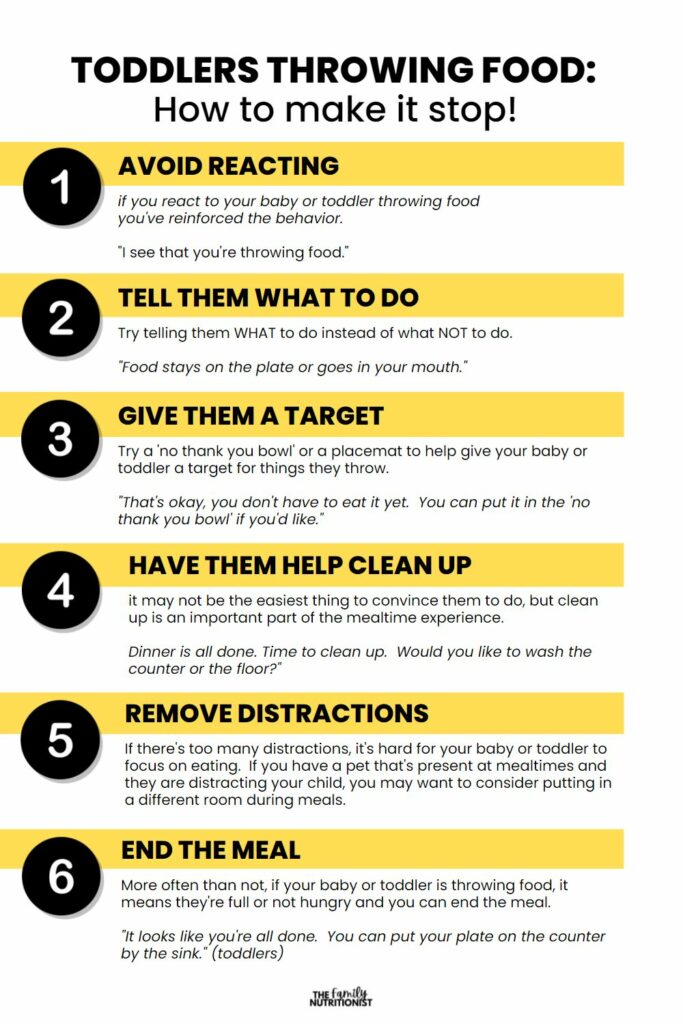
Mealtimes with infants and toddlers can be stressful, but they don’t have to be.
Remember to set realistic expectations for what your child can manage at mealtimes. They won’t eat everything you make, let alone try it, and there’s definitely going to be some food thrown, which will lead to the occasional mess.
To help minimize toddlers throwing food, try these strategies:
- Avoid reacting when they throw food
- Tell them what to do instead of what not to do
- Give them a target to place food, dishes, cups, and utensils
- Remove or minimize distractions
- Have them help clean up the mess (good luck!)
- End the meal and try again next time

